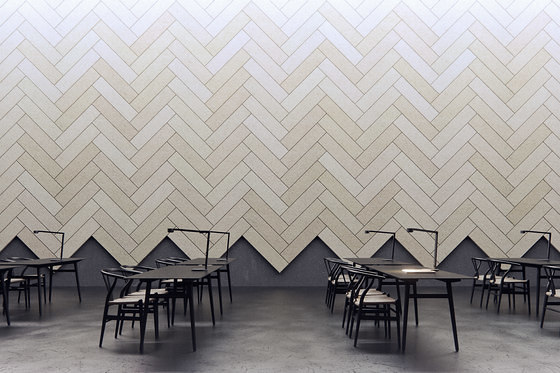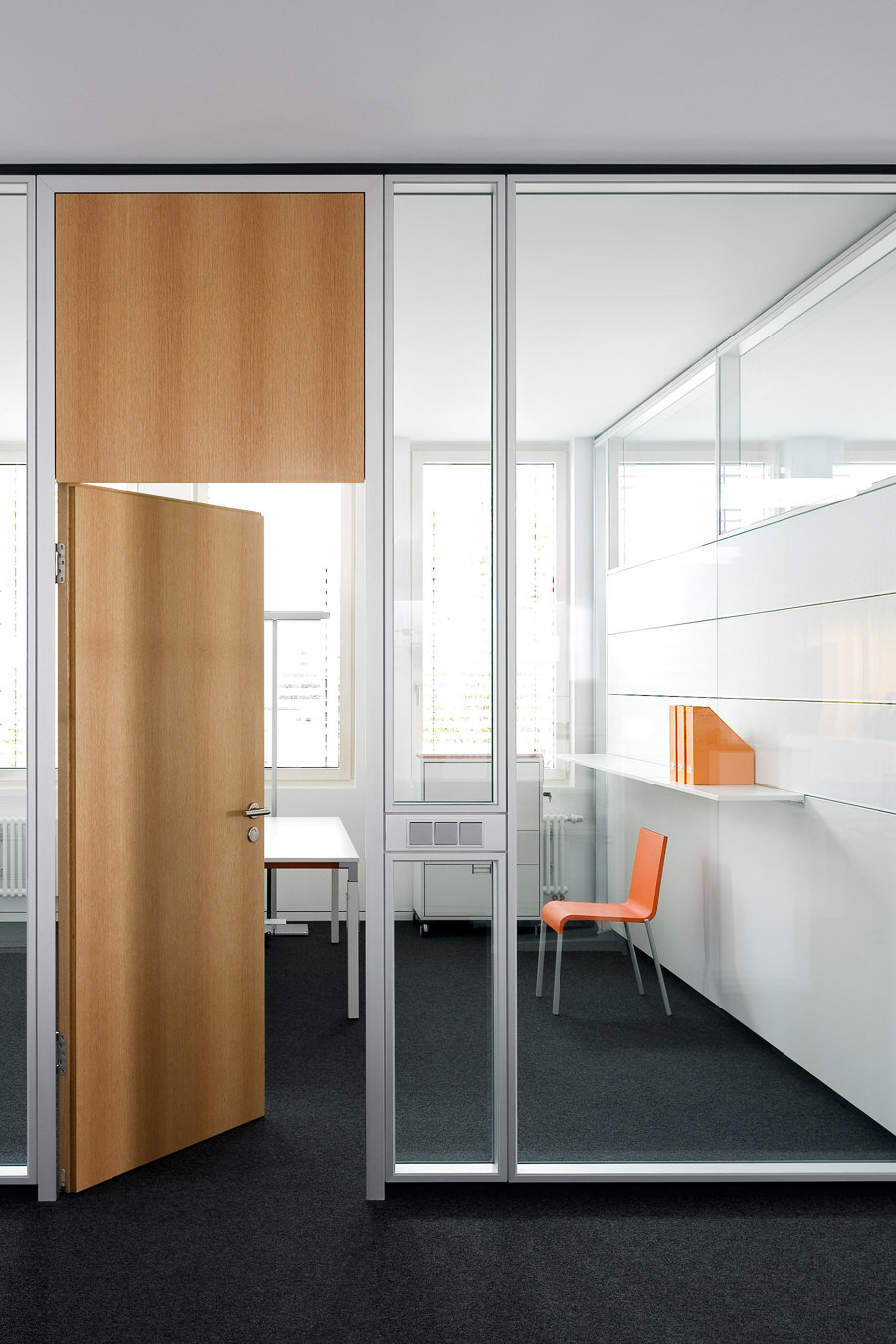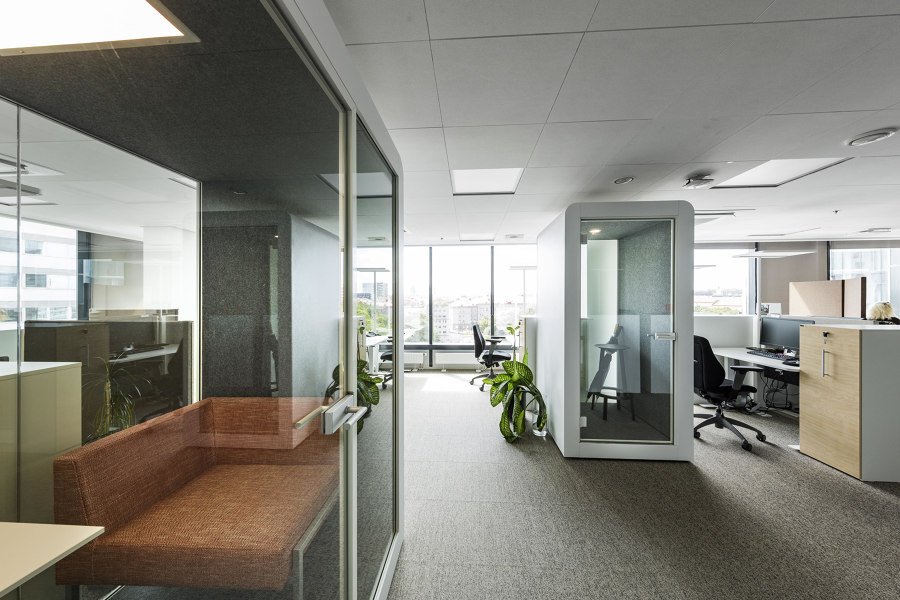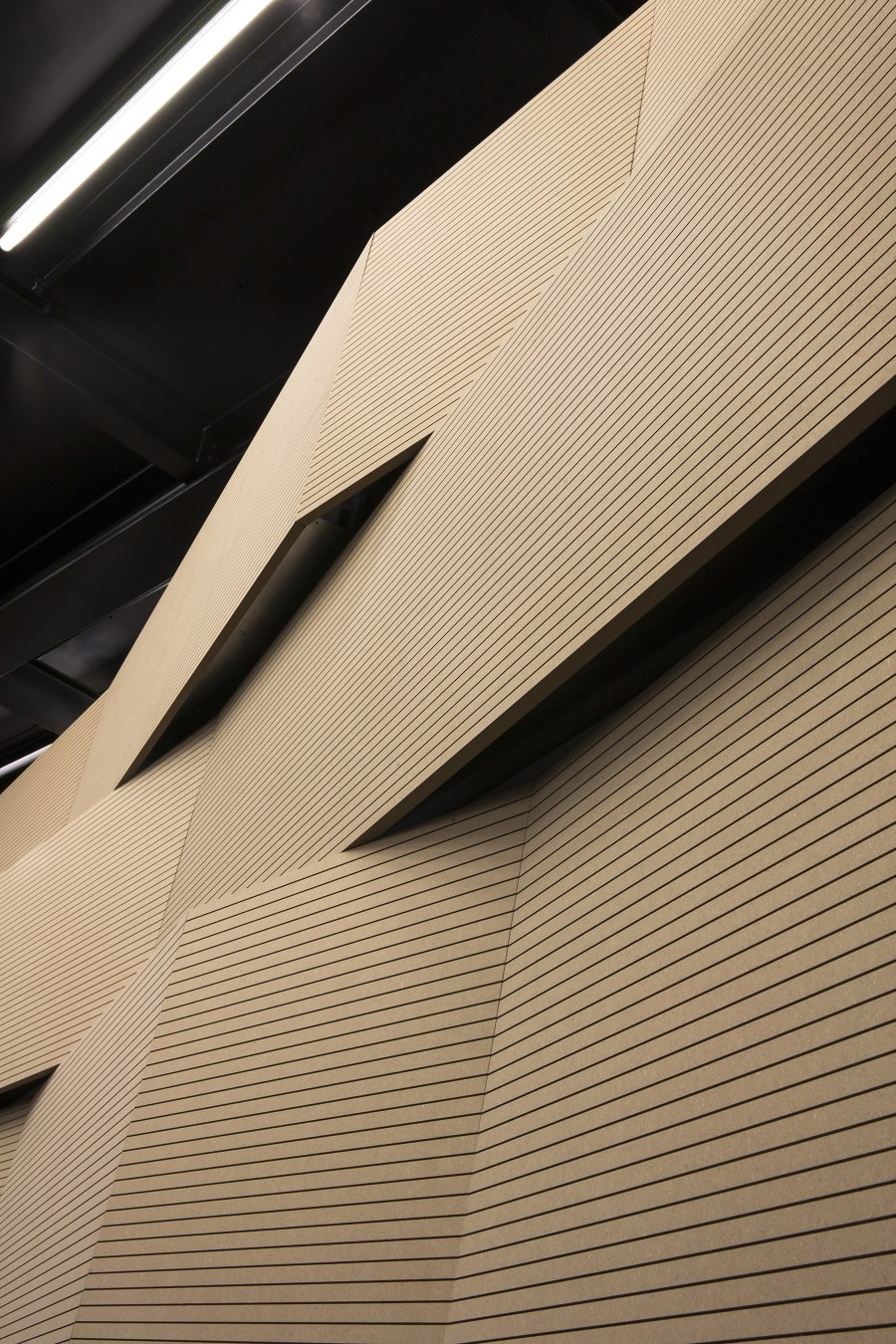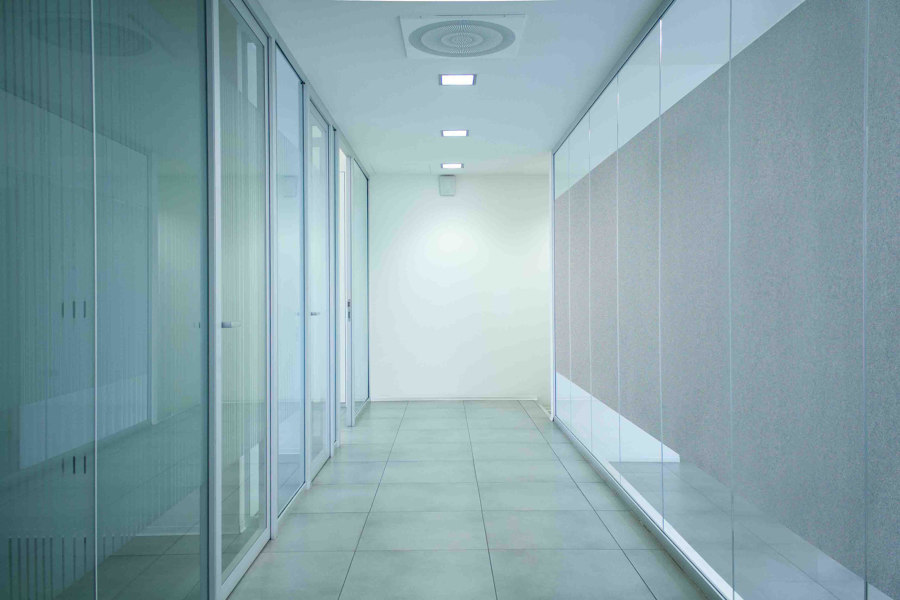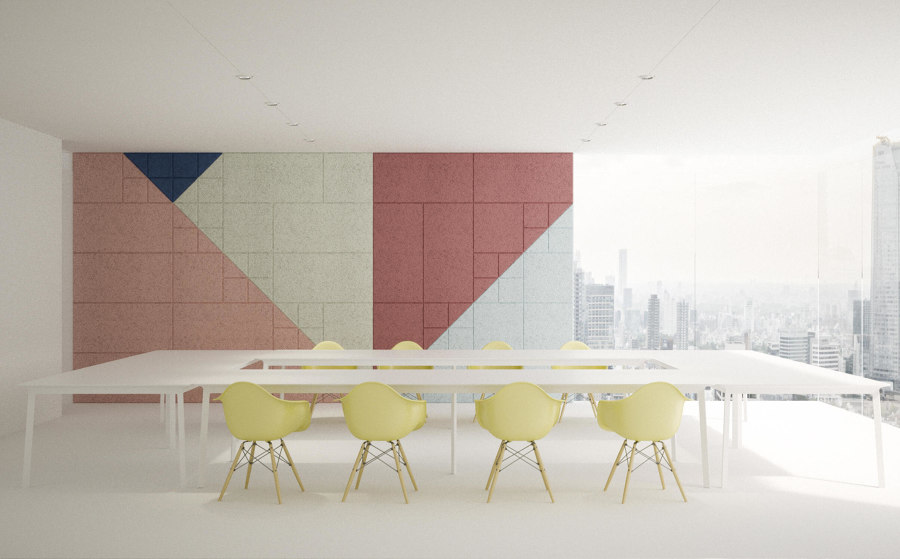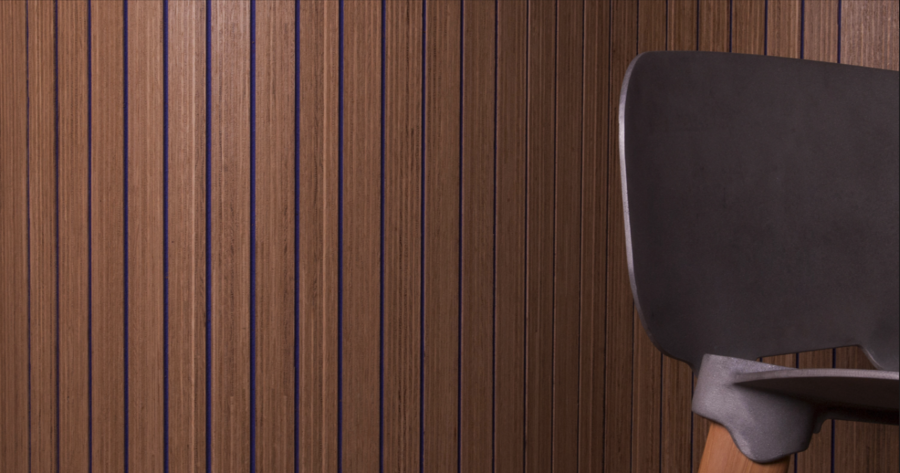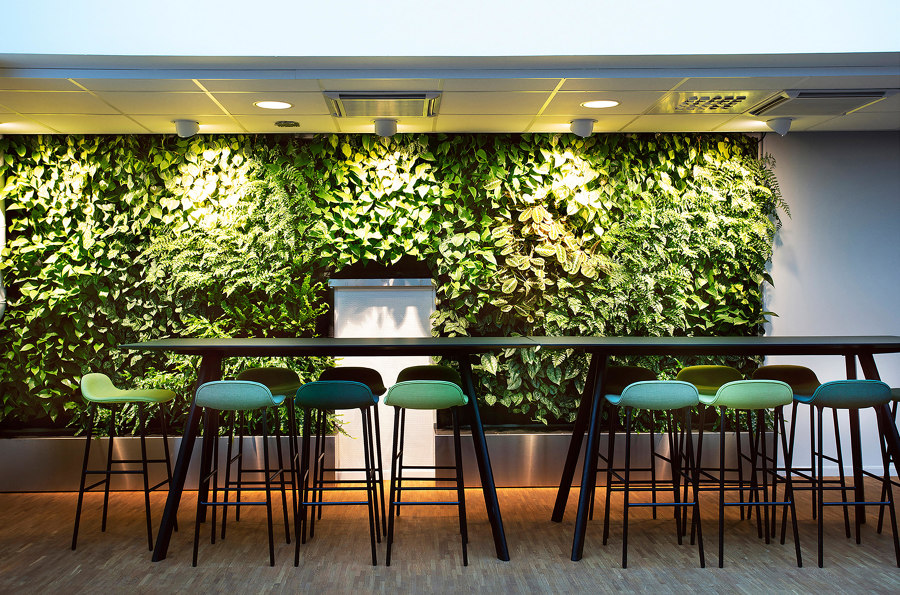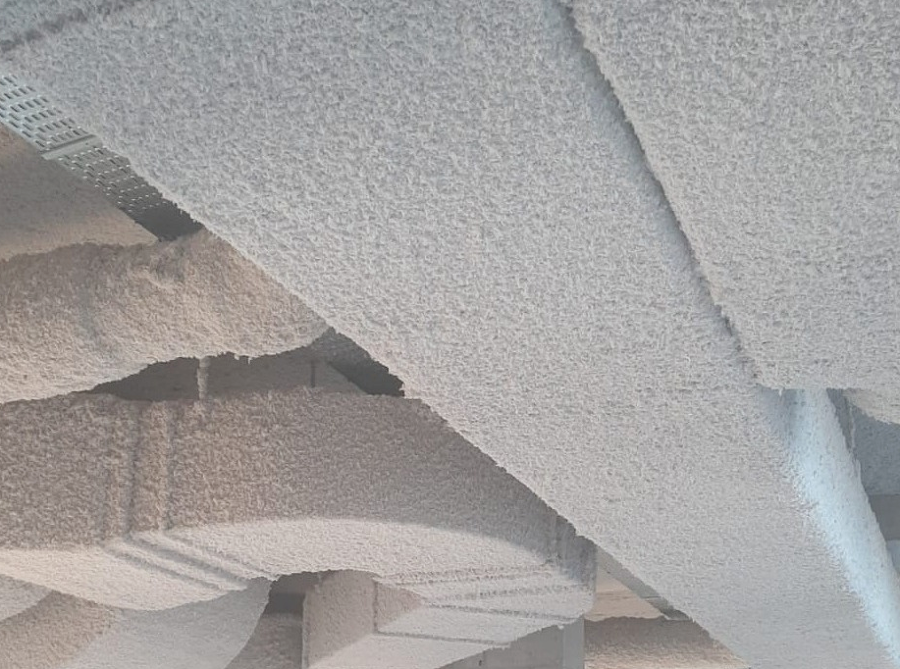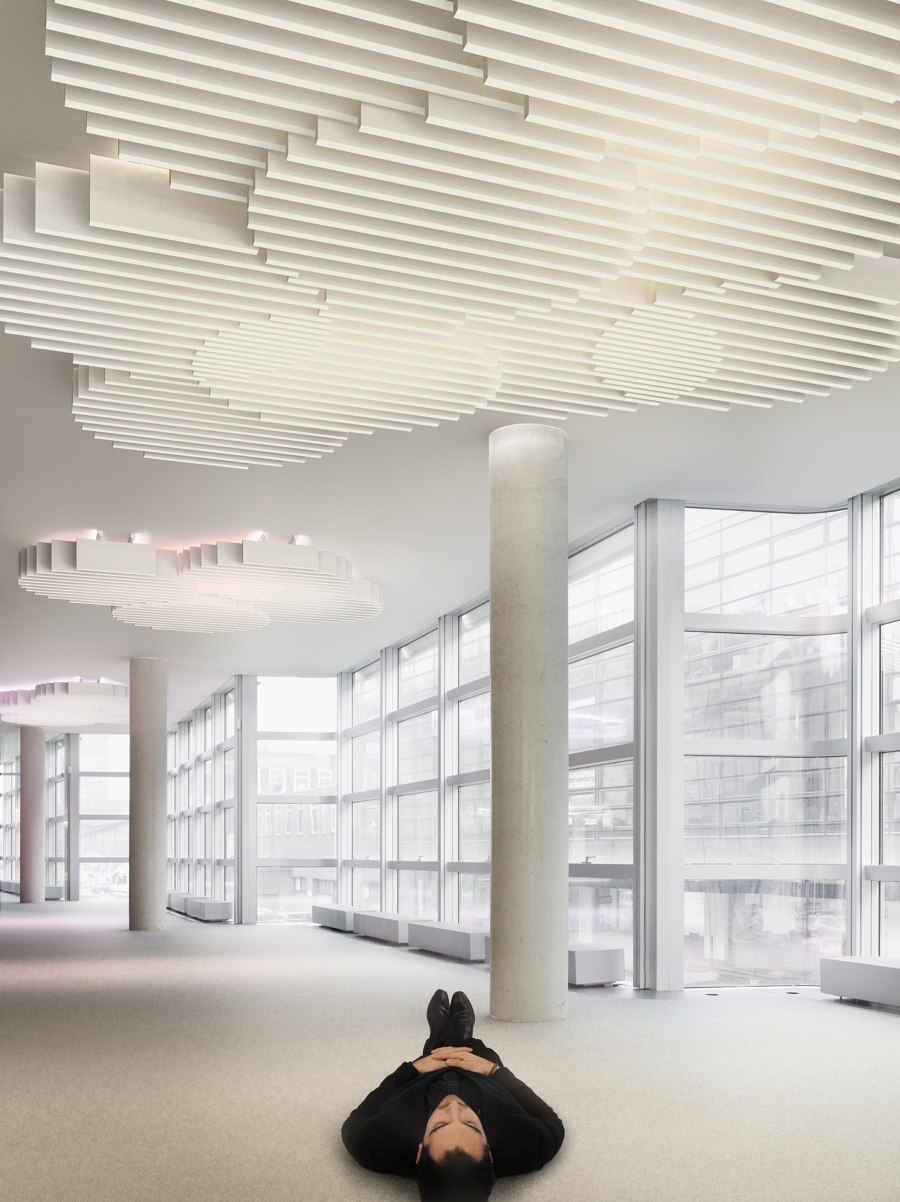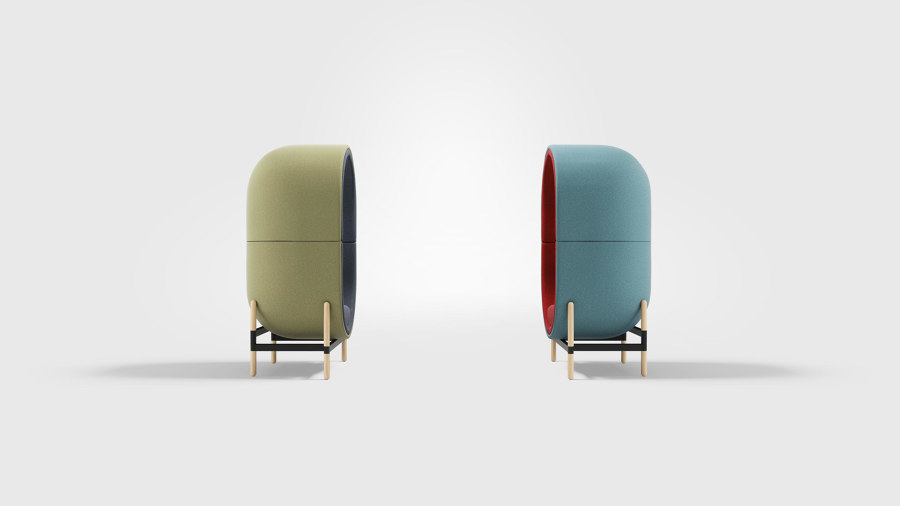Once the forgotten realm of interiors, creating the perfect soundscape is now just as important as light and decoration. Here are the different acoustic products available to create the right tone…
As material technology becomes more advanced and the importance of health and wellbeing is taken more seriously, sculpting sound is now a consistent part of specifiers’ briefs in all sectors, from echo-free hospitality to clear and functional meeting rooms, and even transforming home offices or music rooms into headache-free sound vaults.
When sound waves approach an obstacle, such as a wall, they can do one of three things. Some of them simply pass straight through into neighbouring space, some are absorbed by the wall, and whatever remains is reflected back into the room unchanged. Left unchecked, these returning sound waves create a rising cacophony making it difficult to focus or even hear the person next to you.
Sound Absorption vs Sound Insulation. What’s the Difference?
Sound insulation is concerned with limiting or even stopping the group of sound waves that escape a space, while sound absorption is the science of controlling those waves that like to bounce around inside. Although they both follow similar scientific principles, they are no substitute for each other.
Sound Insulating Partition Systems
An acoustically-insulated room can be accomplished in one of two ways. The first is by replacing a room’s interior wall partitions with sound-insulating alternatives, such as with fecofix glass frames by Feco. The aluminium-framed double-glazed walls feature a large interior cavity, enabling superior sound insulation. With glass joints and integrated blinds between the panes, the product also provides transparency and customisable privacy when required.
Sound-Insulated Room in Rooms
The second option is by specifying entirely insulated moveable meeting rooms, such as Silen’s Space series of 1-, 2-, 4- or 6-person meeting ‘pods’. In Space, no-one (outside the room) can hear you talk, as the enclosed capsules are both sound insulating and sound absorbent, and include their own automated air circulation system, so not even air can escape.
Sound Absorption
For public meeting spaces like restaurants and meeting rooms, sound absorption products such as the geometric Geta panels from Mikodam, ensure voices are clear and unmuffled by reducing the returning waves. The customisable panels transform walls with changing angles and various depths, increasing the range of sound frequencies they absorb.
Lengthening Sound Reverberation
In areas where an auditory experience needs to be heightened, such as concert halls and cinemas, balancing absorption and reflection can lengthen the sound waves’ reverberation time. For example, Fantoni’s Mywall panels combine various sizes, three-dimensional angles and milled grooved surfaces to allow acoustic designers to create unique sound-absorbent compositions.
Shortening Sound Reverberation
Meanwhile, environments that traditionally require the most discreet audio atmospheres, like museums and libraries, require acoustic products that reduce reverberation to an absolute minimum, such as ECOfelt panels by Slalom. At just a few millimetres thick, the material can be applied to any surface, no matter its size or shape, increasing the local sound absorbency as much as possible.
Materials Used In Acoustic Products
Acoustic techniques have evolved from encasing rooms in used egg boxes, but material technologies continue to innovate.
Fibrous Material
By allowing sound waves to penetrate its surface, fibrous material then bends and dampens them before sending them back into the room as heat energy – a useful side-effect of sound-absorbent material is thermal insulation.
Most new acoustic products use either polyester (PET) or wool felt, as opposed to the previously generic open-celled foam. The woven fabric can form varying shapes, colours and designs, allowing specifiers to provide both long and short reverberation time, while remaining creatively relevant.
Fibrous acoustic products come in many shapes and sizes of panel and cladding, but one of the easiest and simplest to apply are the Baux acoustic tiles. These hand-held shapes of varying colours are magnetically applied to a thin metal sheet affixed to the wall – meaning colour and pattern arrangements can be changed on a whim.
Composite Structures
Products such as Plexwood Acoustic by Plexwood sandwich an acoustic wool felt layer between an MDF or plywood substrate, and a three-dimensional plywood veneer that features linear grooves which expose the sound-absorbent central layer. The effect combines a natural wood finish with soft and colourful wool felt, while increasing sound absorbency.
Emerging Green Solutions
Although polyester-made PET and wool felt materials are more sustainable and recyclable than acoustic materials favoured in the past, the current wave of environmentalism is encouraging manufacturers to look further into more – literally – green solutions.
Companies like the Swedish Greenworks create bespoke plant walls that, as well as forming a naturally sound-absorbent surface, improves air quality and mood. Alternatively, if structural parameters make Greenworks’ integrated irrigation system an issue, brands like Ekomoss can provide natural artworks and panels that require little to no ongoing maintenance.
Above: Plexwood Acoustic by Plexwood sandwich. Middle: Indoor Vertical Garden by Greenworks. Below: Round Moss Pictures by Ekomoss
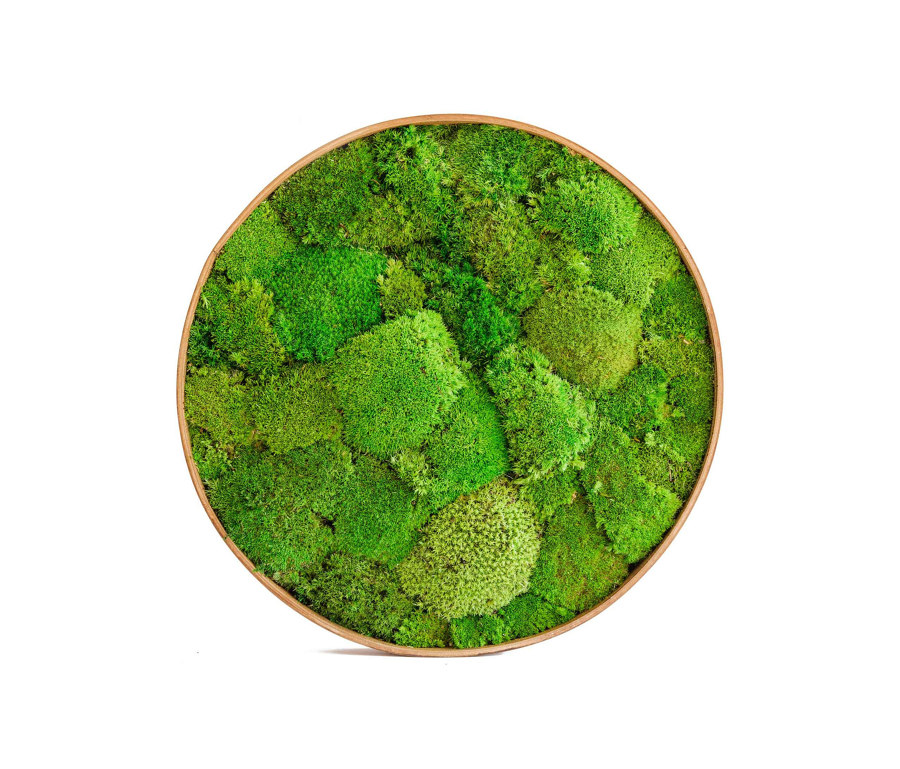
Above: Plexwood Acoustic by Plexwood sandwich. Middle: Indoor Vertical Garden by Greenworks. Below: Round Moss Pictures by Ekomoss
×Other Products That Improve Sound Absorbency
For larger surface areas where the installation of panels or cladding is difficult, BoSpray is a specialist acoustic spray-on plaster from Quietstone that provides up to 60 per cent sound-absorbency after one coat – improving sound quality even before construction is complete.
Acoustic Baffles
Similar to three-dimensional panelling, acoustic baffles are physical elements, often lowered from ceilings or protruding from walls, which block and disrupt sound waves in the spaces in-between. Regimented in their appearance, straight-edged baffles can appear like waves of dominoes, lining up on the ceiling. In the example of Cloud, however, by Owa, the struts penetrate each other to form a visual delight of intersecting circle patterns.
Above: BoSpray by Quietstone. Middle: Cloud by Owa. Below: Capsule by Casala
Acoustic Furniture
Instead of attempting to control sound waves in an entire space, individual furniture pieces can create small areas of tranquillity instead, such as the Capsule chair by Casala. The chair cocoons the user against ambient noise in busy environments. Perfect for large, open-plan workplaces or even exterior public spaces.
At Architonic, specifiers can search for the right products and applications to make any space sound absorbent or sound insulated. Find the above examples, use the advanced search function or simply scroll through the extensive product database.
© Architonic
